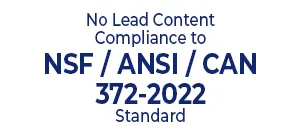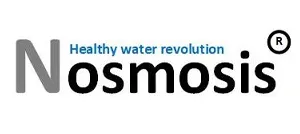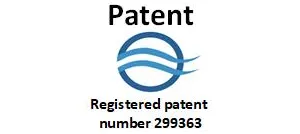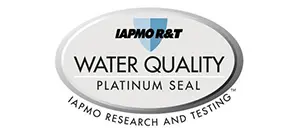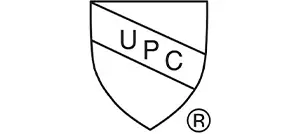At TipaTech, we believe that water filtration should be science-backed and certified by NSF/IAPMO standards.
Today, many families depend on home water filtration systems as part of a healthier lifestyle. But with products touting “alkaline water,” “living water,” or “supercharged hydration,” how do you distinguish genuine health benefits from marketing hype?
At TipaTech, we believe clean water should be backed by science. Here are the essential indicators of truly healthy drinking water—and why not all filters are created equal.
1. NSF Certification: The Gold Standard
NSF (National Sanitation Foundation) certification indicates that a water filtration system has undergone independent testing for:
• Reduction of harmful contaminants
• Material safety and structural integrity
• Performance under real-world conditions
All TipaTech systems—including the T-18 and LotusDY—meet strict international standards:
• NSF/ANSI 42 – Taste, odor, and chlorine reduction
• NSF/ANSI 61 – Material safety and scale control
• NSF/ANSI/CAN 372 – Lead-free components
These certifications ensure your drinking water is safe for every living creature around you.
2. Balanced pH: Between Science and Safety
A. What pH Means and Why It Matters
pH measures acidity or alkalinity on a scale from 0 to 14. The U.S. EPA recommends drinking water have a pH between 6.5 and 9—mainly for aesthetic reasons like taste and plumbing protection.
• Water with pH < 5.5 can corrode pipes and leach metals like copper and lead.
• High pH water (>9.5) may taste bitter and cause scaling in plumbing, but isn’t a direct health risk.
B. Health Considerations
• Acidic water can damage pipes and may indicate contamination.
• Highly alkaline water has no proven health benefits and may worsen digestive symptoms; it’s also more difficult to disinfect effectively.
For more context on the scientific perspective of alkaline and ORP-related water, you can watch this video by a water chemist on YouTube:
C. The LotusDY
The Lotus DY system generates a negative ORP through a natural process, fully compliant with NSF standards—without the use of electricity or degradable metals—delivering a healthy, safe antioxidant effect with no traces of harmful metals.
3. ORP: Why Negative Values Are a Claim
A. Understanding ORP
ORP, or Oxidation-Reduction Potential, measures a liquid’s tendency to either oxidize or reduce substances. A negative ORP indicates a reducing (antioxidant) environment.
• Positive ORP values (e.g., in chlorinated tap water) suggest oxidizing conditions.
• Negative ORP is often associated with antioxidant potential—but this does not inherently mean health benefits.
B. Health Claims vs. Evidence
Some proponents say negative ORP water boosts hydration and neutralizes free radicals. While early studies have small positive findings—e.g., antioxidant effects in mice or improved bone density—no broad clinical evidence confirms major health benefits.
A relevant study published on PubMed suggests potential antioxidant benefits of hydrogen-rich water in animal models, though further research is needed.
You can also explore this article by The Berkey for a balanced overview of what antioxidant water really means and what it doesn’t.
Early customer feedback highlights enhanced anti-aging effects and exceptionally great-tasting water.
C. TipaTech’s Technology
- TipaTech’s patented green technology maintains a negative ORP without electricity or metal plates, ensuring a natural antioxidant effect while avoiding risks of metal leaching or high maintenance.
4. Contaminant Reduction: Adhering to EPA & WHO Standards
Safe drinking water must reduce pathogens, heavy metals, pesticides, microplastics, and disinfection by-products (e.g., trihalomethanes, haloacetic acids). Water treatment regulations—like the EPA’s National Primary Drinking Water Regulations—set maximum contaminant levels and define treatment requirements (epa.gov).
The WHO offers similar global guidelines.
TipaTech filters are designed to address these standards—reducing lead, fluoride, microplastics, pathogenic bacteria, pesticides, and more—while maintaining mineral balance and taste.
5. Safe, Natural Materials and Simple Maintenance
- No electricity, chemicals, or degrading metals
• Preserves essential minerals like magnesium
• Low-cost, straightforward filter replacements
Unlike ionizers using titanium or platinum plates (which may require frequent maintenance and risk metal leaching), TipaTech systems remain effective and safe over time.
What Truly Healthy Water Looks Like
Feature | Why It Matters |
NSF certification | Verified performance and safety across contaminants |
Balanced pH (6.5–9) | Complies with EPA guidelines; safe for plumbing, digestion, and taste |
Negative ORP | Indicates a reducing environment; antioxidant potential without pseudoscience |
Magnesium enrichment | Supports hydration and bodily functions |
Contaminant reduction | Meets EPA & WHO standards for pathogens, heavy metals, and disinfection by-products |
Natural, eco-friendly design | No electricity or degrading metals |
Simple, affordable maintenance | Low-cost filter changes and durable materials |
Conclusion: A Holistic, Certified Solution
By combining the T-18 for full-house filtration with the LotusDY for drinking water, TipaTech delivers a superior, science-backed solution:
• Multi-stage filtration technology
• Retention of beneficial minerals and natural antioxidant support
• Comprehensive contaminant neutralization
• A safe, eco-friendly home water environment
Further Reading & Sources
- EPA on pH in drinking water: [Recommended range 6.5–9] (zerobhydrolife.co.in, epa.gov, assets.freshwatersystems.com)
• EPA Secondary Standards on pH aesthetics & pipe corrosion
• Healthline on alkaline water and ORP limitations (healthline.com)
• WHO & EPA guidelines on drinking water contaminants
• YouTube: Alkaline/ORP water explained
• PubMed: Effects of hydrogen-rich water on antioxidant status
• The Berkey: What Is Antioxidant Water?
• Critique of ORP “magic water” claims (reddit.com)
TipaTech: smart filtration, scientifically validated health, water you can trust.




